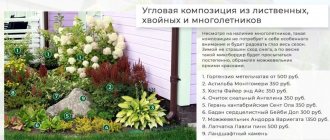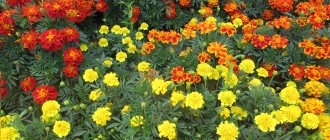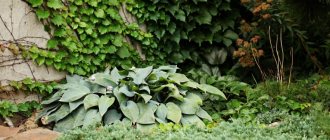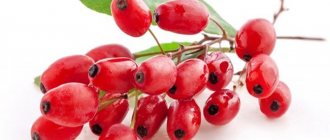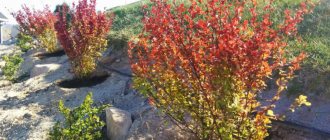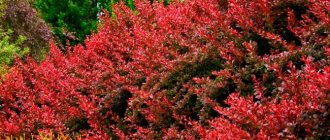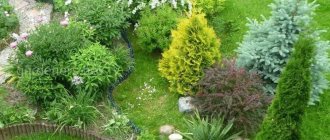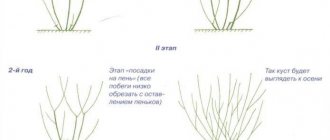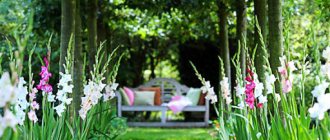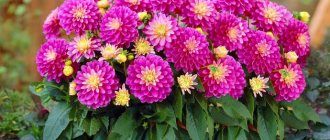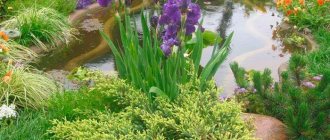Barberry is a fairly popular plant that can often be found in various garden compositions. This is not surprising, because the ornamental barberry shrub has more than 500 different species. The size of the bushes, as well as the color of the leaves, can be very diverse. Therefore, you can choose the ideal option for every taste. What plants do barberry go best with? It is impossible to give a definite answer to this question, since everyone has different preferences. But we will consider the possible options further.
Barberries and annuals
Almost all annual flowers go well with barberries. When composing compositions and planting annuals in open ground, you only need to take into account their height in the future, when they grow. Another point to pay attention to is the shade of the flowers. You should not plant marigolds next to yellow barberry bushes or bright salvia next to red ones. With such combinations, the plants are lost against each other and simply create a bright, monochromatic spot.
Barberry Thunberg Golden Ring (Berberis thunbergii Golden Ring)
Red-leaved shrub of medium growth rate, 1-1.5 m high, with a dense, round, wide-spreading crown. In culture since 1950.
The shoots are dark red, faceted, with single thorns. The leaves are large (up to 4 cm in length), ovate, dark purple, bordered by a thin golden-yellow stripe, turning bright red in autumn. Yellow inside and red outside flowers appear at the end of May (single or small clusters), and the elliptical, coral-red fruits ripen in October and can remain on the bush all winter.
Resistant to diseases and pests, light-loving, drought-resistant, winter-hardy, freezes only in severe frosts, but quickly recovers. Tolerates urban conditions well.
Barberry and perennials
Tall barberry species provide an excellent background for most perennial plants. The leaves of hostas and coral heucheras planted near barberries will look more expressive. The main thing is to choose the right color combination, because there are a lot of options.
If you plant perennial daylilies near barberries, both plants will benefit. During the flowering period, the daylily will attract the main attention, and at other times the bright foliage of the shrub compensates for the inconspicuousness of the neighboring plant.
The combination of fluffy astilbes, barberries and conifers looks very impressive. And if you plant dwarf barberry species in front of rose bushes, they will perfectly hide their unsightly branches below. At the same time, bright flowers will remain available for public viewing.
Dwarf varieties of barberry look great on rocky hills. They go well with various sedums, decorative yarrow, evergreen tenacious, awl-shaped phlox and other types of ground cover or low-growing plants.
Chrysanthemum flowers and September plants together with barberry bushes make up a very interesting and bright autumn composition.
Barberry Thunberg Atropurpurea Nana (Berberis thunbergii Atropurpurea Nana)
Red-leaved densely leafed shrub with a slow growth rate, 0.5-0.6 m high, with a compact lush cushion-shaped crown.
The shoots are red-brown, short, with single tripartite spines. The leaves are small (up to 2 cm in length), ovate, purple-red and brown-red, turning purple in autumn. Small flowers, yellow inside and red outside, appear in April-May in clusters of 2-5 pieces, and elliptical-shaped bright red shiny fruits ripen in October and can remain on the bush all winter.
Resistant to diseases and pests, light-loving, drought-resistant, winter-hardy (in some very frosty winters, annual shoots may freeze). It should be protected from snow piles that deform the crown. Tolerates urban conditions well.
Conifers and barberry
The combination of barberry bushes with coniferous plants is very common in landscape design and can be seen in many private gardens. These two types of ornamental plants go well together and at the same time highlight each other’s individuality well. In coniferous mixborders, barberries with bright foliage are used to highlight the coniferous greenery.
Tall barberry can serve as an excellent contrasting background for low-growing conifers planted in the foreground. And if you plant dwarf or medium-sized barberry varieties against the background of coniferous plants, the result will be very bright and picturesque.
Blue spruce trees look different if you plant them as companions with barberry bushes with bright yellow, red or burgundy leaves. But in everything you should adhere to measures so that the composition does not become oversaturated with various shades.
Barberry Thunberg Green Carpet (Berberis thunbergii Green Carpet)
A green-leaved shrub of medium growth rate, up to 1 m high, with a dense, wide-rounded “flattened” crown. In culture since 1965.
Densely branched drooping shoots are brown-black, faceted, with single, tripartite, thin spines. The leaves are small (up to 2 cm in length), round, light green, turning scarlet-red or orange-yellow in autumn. Whitish-greenish small flowers appear at the end of May in small clusters of 2-5 pieces, and numerous elliptical-shaped bright red or pink shiny fruits ripen in September and can remain on the bush all winter.
Resistant to diseases and pests, light-loving (loses decorativeness in the shade), drought-resistant, winter-hardy, freezes only in severe frosts, but quickly recovers. Tolerates urban conditions well.
Barberry and shrubs
Quite often, hedges are planted from barberry bushes. For this, upright varieties with different leaf colors are usually used. If you use not only barberry for this, but also other types of ornamental shrubs, the hedge will turn out to be even more interesting and bright. Fragrant lilac, jasmine, decorative vesicle, boxwood or boxwood, strongly branched mackerel, deutzia bush, lush forsythia are best suited for this.
Barberry planted next to shrubby cinquefoil looks absolutely gorgeous, especially if you choose contrasting shades. The same can be said about decorative spirea.
Barberry Thunberg Red Chief (Berberis thunbergii Red Chief)
Red-leaved, densely leafed shrub of medium growth rate, up to 1.5-1.8 m high, with a loose spreading crown.
The shoots are dark red, faceted, with many powerful single thorns. The leaves are shiny, medium-sized (3-3.5 cm long), narrow, bright purple-beet color, turning orange-brown in autumn. Lemon-yellow flowers with a reddish core appear in small clusters in April-May, and elliptical-shaped coral-red fruits ripen in September-October and can remain on the bush all winter.
Resistant to diseases and pests, light-loving (in bright sun the foliage turns green), drought-resistant. Frost resistance is below average (it freezes even in normal winters, but quickly recovers). Tolerates urban conditions well.
Cereals and barberry
Cereals are good neighbors for barberry in terms of compatibility. Moreover, there are a lot of options for their placement. Tall cereal plants (such as herbaceous molinia, miscanthus or fan grass, grate grass and others) can serve as an excellent background for decorative low-growing varieties of barberries. Medium-sized cereals (barley or meadow grass) can be placed at the same level as low-growing ones or planted in front of tall barberries.
Low-growing cereals can be used to “knock out” the bottoms of tall varieties of barberry or plant them in rows, creating lush borders. Cereal grasses such as interesting fescue, fluffy haretail, sesleria or maned barley are best suited for this purpose.
Unwanted "neighbors"
There are also plants next to which barberry grows poorly and feels oppressed, and its foliage becomes small and dull. What plants do barberry not combine well with? Trees such as tall poplar, common acacia, cherry or walnut have a detrimental effect on barberries. The reason for this is that the roots of these trees secrete substances that harm barberry. Elderberry is also a poor companion plant for barberries.
Barberry is a very bright plant and it is difficult not to notice it in the garden. A huge selection of shrub species allows you to create a variety of compositions: luxurious and unforgettable. The main thing is not to be afraid to experiment, but it is also important not to overdo it, so that due to an oversaturation of different colors, the area does not turn into one bright spot.
Features of planting in the regions
There are no differences when planting barberry in different regions of the country. But the difference in climate affects the choice of variety and plant care.
Barberry in Siberia
Although barberry is a frost-resistant plant, some species are still less suitable for growing in Siberia. These are Thunberg barberry, Korean barberry, entire barberry. You can choose common barberry, Amur barberry, and oblong barberry. For the winter, it is recommended to cover the young bush - along the edges with a spruce forest, and then, when snow falls, to make a snowdrift. Large plants are tied with twine, a box is installed into which dry leaves are poured. The structure is wrapped with non-woven material on top. The soil around the plant is mulched.
Barberry in the Moscow region
In the climate of the Moscow region, culture feels good. It is only important to provide the bushes with a lot of light and water-free soil. Common barberry, Thunberg barberry, and Ottawa barberry are excellent for growing in the region.
Video: growing Thunberg's barberry
Barberry is one of the most unpretentious shrubs growing in Russia. We can say with confidence that with proper planting and proper care, it will take root in any garden plot, delighting you with a good harvest and colorful appearance from year to year.
- Author: Tatyana Pleshakova
Photographer, copywriter. Work experience 8 years. Knowledge of English, German. Rate this article:
- 5
- 4
- 3
- 2
- 1
(0 votes, average: 0 out of 5)
Share with your friends!
